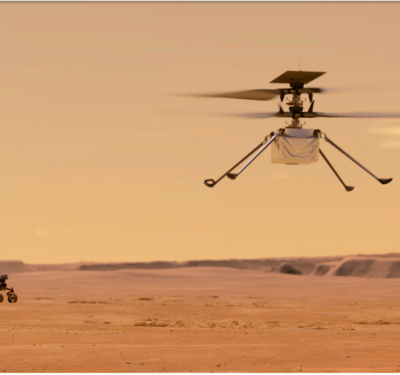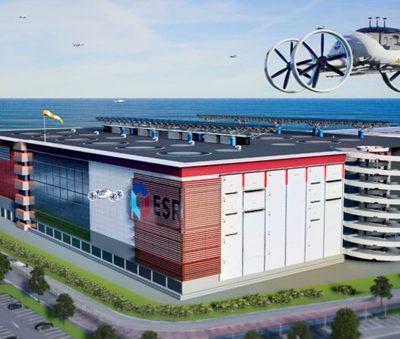In a world increasingly threatened by rogue drones and asymmetric aerial incursions, Dedrone by Axon delivers a decisive suite of countermeasures and operational precision to secure critical skies.

Dedrone by Axon earned this year’s Inside Unmanned Systems Innovation Vanguard Award for Best Counter-UAS (C-UAS)—a distinction that underscores the company’s technological maturity, global scale and ability to detect, identify, track and mitigate unauthorized drones in real time. While the commercial drone market has exploded with legitimate applications, the threats posed by unregulated or malicious UAS activity—from smugglers to state actors—have pushed airspace security to the top of national and local agendas. Dedrone has been preparing for this moment for more than a decade, Chief Marketing Officer Mary-Lou Smulders said.
“We’re in a world where everyone has access to drones,” Smulders told Inside Unmanned Systems. “They’re cheap, they’re available and they’re incredibly capable. And that changes the threat profile—not just for militaries, but for cities, for companies, for events.”
The urgency is real. According to FAA statistics, there were over 2,600 reported drone incursions near U.S. airports in 2023—a dramatic increase from the less than 500 reported in 2016. Correctional facilities reported over 500 drone drops of contraband across North America last year. In the UK, the Civil Aviation Authority noted a 64% rise in unauthorized drone activities near sensitive sites between 2021 and 2023. And globally, more than 13,000 incidents of illegal drone activity were logged in 2024 across 40 countries.
“It used to be we had to educate people about the threat,” Smulders said. “Now, they come to us. They’ve seen the drones themselves. They’ve had the incident.”
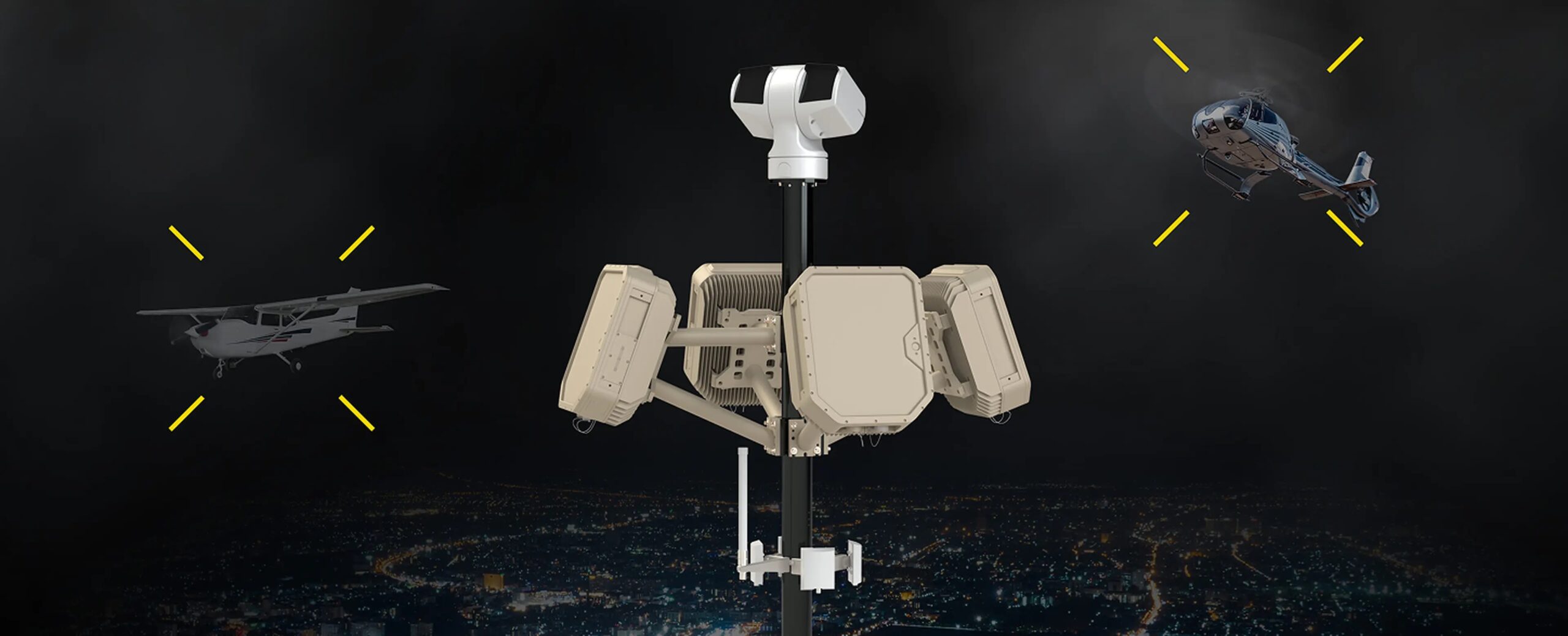
Founded more than 10 years ago, Dedrone has evolved from a pioneering sensor company to a premier global C-UAS solution provider. Its integrated platform now protects more than 900 sites in 33 countries—including stadiums, airports, prisons, military bases and national critical infrastructure.
“We aim to be the global leader in airspace security,” Smulders added. “That includes both stopping the bad drones, but also enabling the good ones. Drones are tools—and we want to enable their positive uses while securing against their threats.”
This distinction was reinforced by the judges of the 2025 Innovation Vanguard Awards, who praised Dedrone’s dual-use scalability and battlefield-proven effectiveness in both military and public safety environments. “Dedrone’s ability to adapt its tech stack from high-profile civilian venues to near-peer contested zones is a model for the counter-UAS industry,” read one endorsement.
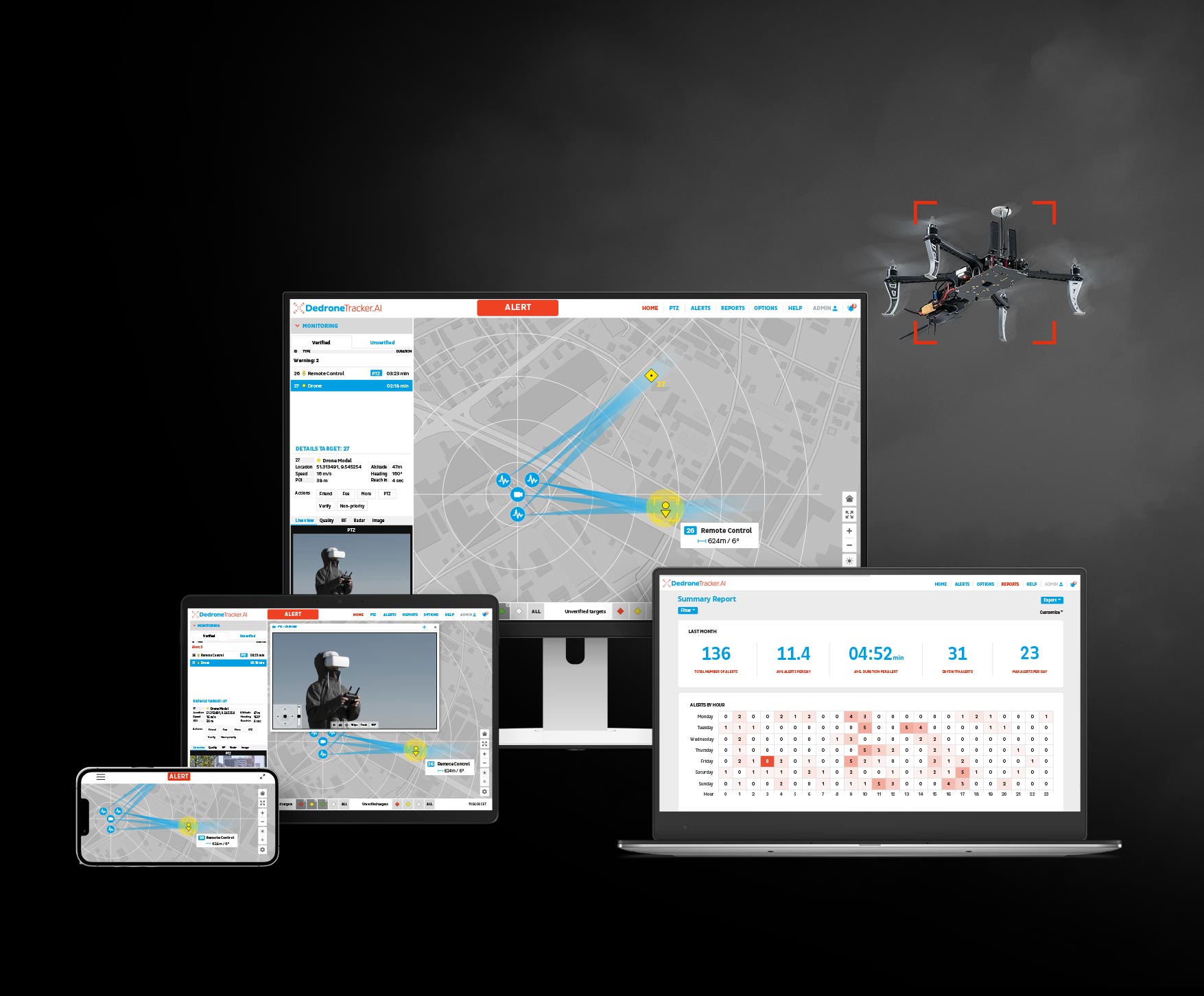
THE ISR CONNECTION
At the tactical edge, hostile UAS platforms have become persistent, low-cost ISR assets for adversaries.
“Airspace superiority is no longer defined by who has the most capable fighter jets,” Smulders said. “Since 2022, it’s been about who can field the smartest drones—human-piloted or not. We’re giving the good guys a picture of their airspace. That means understanding what’s there, what it’s doing and who’s behind it. And doing that in real time, not after the fact.”
Dedrone’s solution effectively flips the dynamic, providing full-spectrum ISR for security personnel and warfighters. With a proprietary C2 platform that merges radar, RF and optical sensors using real-time AI fusion, Dedrone can detect and identify drones with 99.7% accuracy—based on millions of labeled drone and non-drone images.
From a system architecture standpoint, Dedrone operates across four pillars:
1. Detection—Identifying RF, optical and autonomous drones, including dark and silent types.
2. Tracking—Monitoring drone flight paths and operator positions in real time.
3. Identification—Classifying threats by model, payload risk and friend-or-foe designations.
4. Mitigation—Applying tailored kinetic, RF or EW defeat methods when authorized.
“The AI at the heart of DedroneTracker.ai fuses multi-sensor inputs to deliver a true, correlated picture of the airspace,” Smulders said. “That’s not just sensor stacking—it’s real AI fusion. We’re not just detecting drones, we’re detecting their behavior,” she said. “Is it loitering over a target? Is it moving with purpose? That context is what makes this intelligence useful.”
TAILORING THE SHIELD: HOW DEDRONE ADAPTS TO EACH THREAT ENVIRONMENT
Dedrone’s product suite spans fixed installations (DedroneFixedSite), mobile kits (DedroneRapidResponse), vehicle-mounted (DedroneOnTheMove), field-deployable solutions (DedronePortable), and full tactical kill-chain systems (DedroneTactical). This breadth enables tailored counter-UAS coverage in any environment, from open stadiums to dense urban corridors, or kinetic warzones.
“Some of our solutions are made for a fixed site, like a prison,” Smulders said. “Whereas law enforcement may say, well today I’m protecting a large running event, and tomorrow an emergency scene, and the next day a crime scene.”
This modularity was put to the test in recent deployments, including the NASCAR Cup Series at Darlington Raceway, where Dedrone partnered with TMG to prevent unauthorized drone incursions. “We were able to ensure a completely drone-free race day, keeping both the crowd and airspace secure,” Smulders said.“The thing that stood out to me was how invisible it was,” she added. “That’s good counter-drone: when nothing bad happens and no one notices.”
Dedrone’s software core, Dedrone Tracker.AI, enables not just sensor fusion, but operational command and control. “It’s not just about seeing a drone but understanding exactly what it is and what to do about it in the moment,” she said.
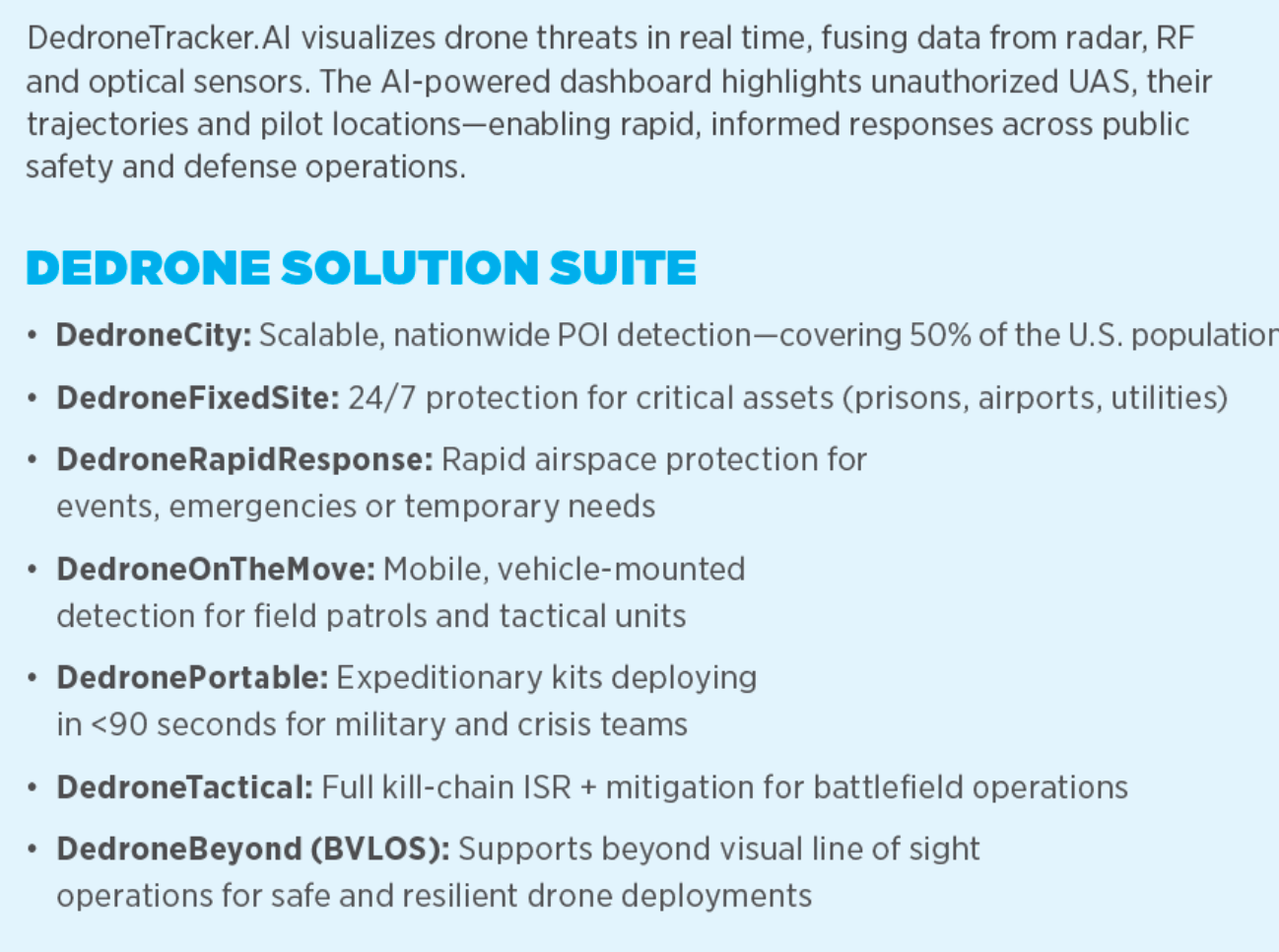
CIVILIAN PREPAREDNESS AND PUBLIC SAFETY
Public safety agencies are rapidly becoming some of Dedrone’s most forward-leaning customers. Dedrone currently supports over 140 public safety agencies across the globe. In Los Angeles, for example, after a drone collided with a firefighting aircraft during a wildfire, Dedrone’s sensors were installed across multiple locations.
“We were able to capture the full flight path,” Smulders said. “That’s what got L.A. County Fire to say—let’s scale this.”
Dedrone’s violations database tracks daily drone breaches across restricted airspace, and has become a reference point for public agencies and federal officials alike.
“We’re getting inquiries from people saying, ‘I’ve got a drone problem. When I started, we had to explain the problem to everyone—‘You own a prison, you’re getting drug drops, let me explain what’s happening.’ But that’s changed.”
MILITARY PROVENANCE AND BVLOS OPERATIONS
Dedrone’s battlefield credentials have been cemented in Ukraine. Nearly 300 DedronePortable RF sensors were deployed to monitor the 600-mile front line, offering early detection and battlefield situational awareness for the Ukrainian military.
“They were detecting up to 250 drone types,” Smulders said. Partnered with RF jammers and other effectors, the system offered full-spectrum defense. “It was integrated at the level of central command,” Smulders added.
In Michigan, Dedrone enabled the Oakland County Sheriff’s Office to operate BVLOS drone-as-first-responder missions in one of the largest volumes ever approved near a major city.
“It’s not a rural outpost, it’s Detroit-adjacent,” Smulders said. “We’re proving this works where the density is real.”
Looking ahead, Smulders sees both threat and opportunity converging.
“One, the innovations we’re seeing in Ukraine—autonomous, silent drones, RF-less command and control—will come to the U.S.”
“Two, the upside: Drones will become part of daily life in amazing ways—delivery, defibrillator response, situational awareness. But for that to work, you need a trusted security envelope.”
In a world where asymmetric drone threats outpace conventional regulation, Dedrone’s AI-powered C2 suite offers the clarity, speed and flexibility required to stay ahead.
“Counter-drone is like the insurance policy,” Smulders said. “It’s what makes the rest of the drone ecosystem viable.”


